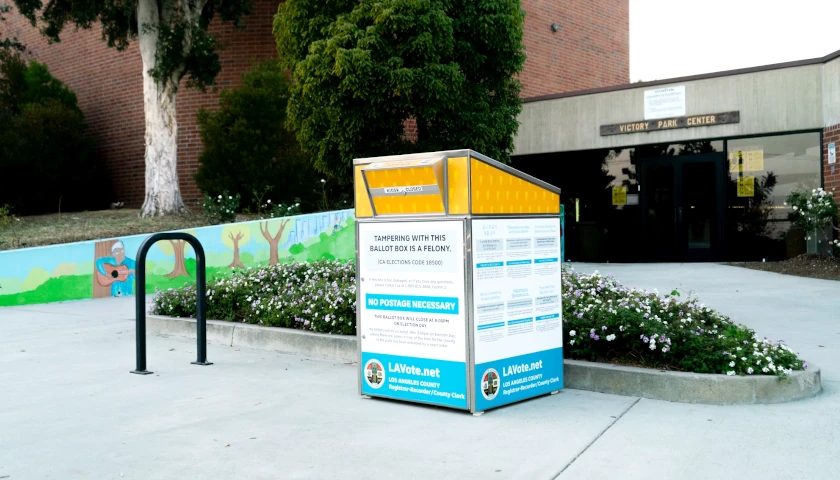by Amy Swearer
The U.S. Court of Appeals for the Third Circuit held this week in Range v. Garland that the government cannot disarm people convicted of minor, nonviolent offenses. In doing so, it handed down perhaps the most significant Second Amendment victory since the Supreme Court’s landmark decision last year, where it held that Americans have a constitutional right to carry handguns in public for self-defense.
The Third Circuit’s decision in Range is noteworthy for several reasons and likely sets up one of the next major Second Amendment battles at the Supreme Court. So, what, exactly, was this case about, and what can we expect next?
How Bryan Range Lost His Second Amendment Rights
In 1995, Bryan Range was struggling to financially provide for his wife and three young children with an annual income that placed the family of five well below the federal poverty line. He signed and submitted an application for food stamps that understated his income—a criminal misdemeanor in Pennsylvania, where he lived.
He accepted full responsibility for the misrepresentation, pled guilty to a single count of making a false statement to obtain food stamps, paid almost $3000 in restitution and fines, and completed his sentence of three years probation without incident. By all accounts, this was Range’s only significant interaction with the criminal justice system, and he has been an upstanding citizen for nearly three decades.
Nevertheless, because Range was convicted of a misdemeanor that, at least in Pennsylvania, carried a possible sentence of more than two years imprisonment, federal law prohibits Range from purchasing or possessing firearms until Pennsylvania restores his Second Amendment rights.
Pennsylvania, however, is a notoriously difficult state in which to have one’s gun rights restored, requiring a person to receive judicial expungement—something that can only be obtained after a gubernatorial pardon, which, in turn, may only be granted after a favorable recommendation from the state’s Board of Pardons.
Range’s Long Fight for His Rights
Several years ago, Range filed a lawsuit in federal court that challenged the constitutionality of the federal statute (18 U.S.C. §922(g)(1)) that criminalized his possession of firearms.
He faced an uphill battle.
As I explained a 2018 Heritage Legal Memorandum, the Supreme Court’s decisions in D.C. v. Heller (2008) and McDonald v. City of Chicago (2010) should have called into serious question laws that strip Americans of their right to keep and bear arms merely because they were convicted of nonviolent felonies.
However, in the years following those cases, lower courts nonetheless routinely used inappropriate interest-balancing tests to continue upholding lifetime gun bans for people who never presented a risk of violence (like Martha Stewart, for example).
In Range’s case, the district court was persuaded that he was an “unvirtuous citizen” whose crime, while nonviolent, was considered a felony in many jurisdictions. That alone was sufficient for the government to permanently disarm him.
Range appealed.
While his appeal was pending, the Supreme Court decided that the ability to carry a pistol in public was a constitutional right in New York State Rifle & Pistol Association v. Bruen. In doing so, the justices explicitly told lower courts that they could no longer use the analytical framework they developed after Heller and McDonald. Instead, if the challenged gun law regulates conduct covered by the Second Amendment, the government must prove that the law is “consistent with the Nation’s historical tradition of firearms regulation.”
Unfortunately, a three-judge panel of the Third Circuit initially affirmed the district court’s judgment, even under the new Bruen test. In short, it determined that the historical tradition supported the idea that the government could disarm anyone who committed criminal offenses it deemed sufficiently serious to place them “outside the class of people traditionally entitled to Second Amendment rights.”
The Third Circuit agreed to rehear the case “en banc,” meaning before all of the circuit judges instead of just a select panel.
By an 11-3 vote, the en banc Third Circuit sided with Range. The majority opinion was written by Judge Thomas Hardiman, who had previously a written powerful dissent in Drake v. Falko (2013) and concurrence in Binderup v. Attorney General (2016) urging his colleagues to provide robust support for Second Amendment rights.
In the Range case, the court rejected the government’s argument that it could, in essence, unilaterally determine who is or is not a member of the “people” referenced in the Second Amendment by merely tagging anyone it wants with the label of “criminal” or “irresponsible.” That sort of “extreme deference gives legislatures unreviewable power to manipulate the Second Amendment” and undermine the reality that constitutional protections exist to take certain policy choices out of legislators’ hands, the court said.
Because Range remains a member of “the people” despite his nonviolent conviction, the government had to demonstrate that its prohibition was consistent with the nation’s historical tradition of firearms regulation. This it could not do.
While the Heller majority asserted that “nothing in our opinion should be taken to cast doubt on longstanding prohibitions on the possession of firearms by felons,” federal law did not disqualify nonviolent offenders like Range until 1961, nearly 170 years after the Second Amendment was ratified. This is hardly a longstanding prohibition by constitutional standards and cannot be used to understand the scope of the Second Amendment right.
While Founding-era governments disarmed certain groups of people like Native Americans and slaves, the reasons for doing so were not similar to the reasons for disarming nonviolent felons like Range.
Moreover, while it may be true that some nonviolent offenses were punishable by death (an admittedly much more severe punishment than disarmament), even violent felons could “repurchase” arms after completing their sentences if they were released back into society.
Finally, Range’s crime of making a false statement to obtain food stamps was not remotely comparable to the types of violent, gun-related offenses that might have, in some circumstances, allowed the government to seize an offender’s guns under “forfeiture” statutes.
In a concurring opinion, several Third Circuit judges further explained what they perceived to be the clear impetus behind Founding-era disarmament laws—“a desire to stop firearms from being possessed or carried by those who cannot be trusted with them” because they, if armed, “plausibly pose a threat to the orderly functioning of society.”
So, while §922(g)(1) is “presumptively lawful” insofar as the individuals disarmed pose legitimate threats, there is simply no evidence that offenders like Range fit into that category.
Range’s Victory Is Important
Obviously, Range’s victory is important for both his own personal enjoyment of the right to keep and bear arms, as well as for countless Americans who, like Range, have had their constitutional rights stripped away from them despite never constituting a threat to society.
From a practical perspective, this ruling also creates a “circuit split” in which two or more federal circuit courts of appeal have reached differing conclusions about the same issue. Because this circuit split would also result in a federal law being enforceable in some parts of the country but not in others, there’s a very high likelihood that the Supreme Court will step in to “resolve the split” and definitively settle the issue.
This would almost certainly involve the court further clarifying how the Bruen test ought to be applied in practice—something that could have huge ramifications for future challenges to gun laws.
Also worth noting is that while Second Amendment legal victories often end with judges split down perceived ideological lines, two Biden-appointed judges—Arianna Freeman and Tamika Montgomery-Reeves—sided with the majority.
While many federal courts have been just as quick to undermine Bruen as they were to undermine Heller and McDonald, the Third Circuit’s adherence to principled analysis offers proponents of the Second Amendment a much-welcomed breath of fresh air.
Hopefully, this victory is just the first of many.
– – –
Amy Swearer is a legal fellow in the Edwin Meese Center for Legal and Judicial Studies at The Heritage Foundation.
Photo “Gun” by Karolina Grabowska.




